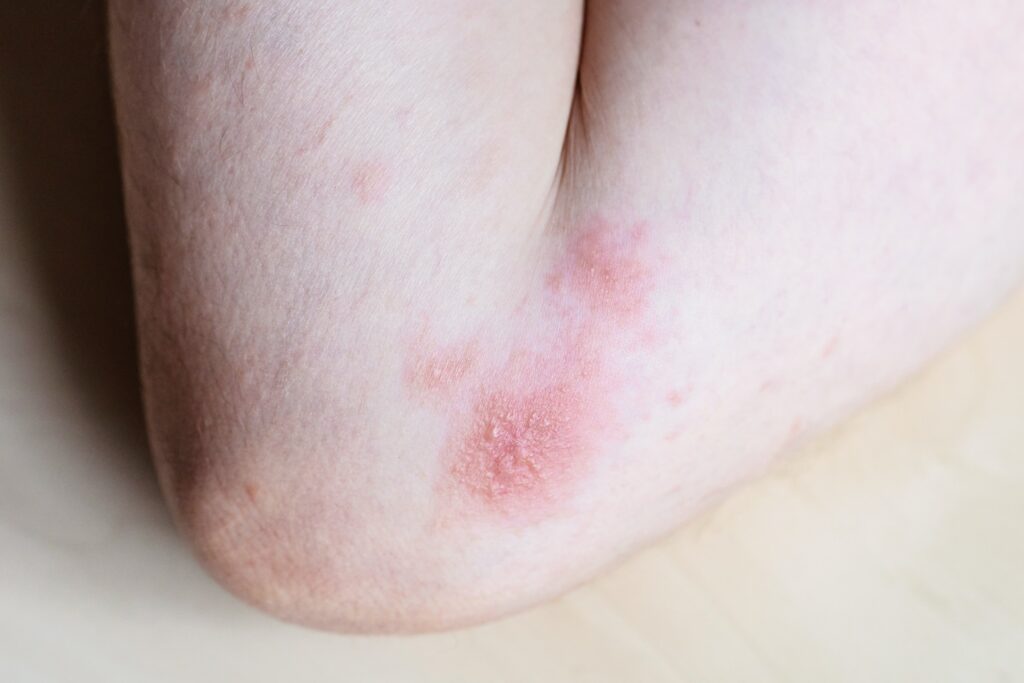Brief Overview of Scorpions and Their Stings
Scorpions are arachnids that belong to the same class as spiders, ticks, and mites. They can range in size from tiny to as large as eight inches.
With over 2,000 species of scorpions around the world, identifying them can be a challenge. Most scorpion stings are not dangerous and only cause mild symptoms such as pain and swelling at the site of the sting.
However, some species of scorpions found in parts of Arizona, New Mexico, southern California, Mexico, and other areas can be more dangerous. The bark scorpion is one such species known for its venomous sting that can cause severe reactions in people who are allergic or sensitive to the venom.
Unmasking the Scorpion’s Venomous Arsenal: Understanding Scorpion Stings and Venom! Deepen your understanding of scorpion stings and the venomous attacks they unleash. Explore our comprehensive article on scorpion sting and venom to unravel the mysteries behind their potent weapons!
Importance of Identifying a Scorpion Sting
Identifying a scorpion sting is crucial because symptoms can vary depending on the severity level. Mild stings may only cause minor pain and swelling at the site of the sting while severe stings could result in anaphylaxis – a severe life-threatening allergic reaction that requires immediate medical care. In some cases, people who have experienced subsequent stings from different scorpion species may have stronger reactions or develop allergies to their venom resulting in worse symptoms than before.
Therefore it’s necessary to know what a scorpion’s stinger sting looks like so you know when medical care is necessary. Furthermore, identifying a scorpion’s appearance allows you to take preventative measures against them.
By understanding how they look like you’ll be better equipped to prevent them from entering your home or coming into contact with them while outside. In addition, if you’re aware of which species are native to your area you’ll know what precautions to take when venturing out into nature so that you avoid being bitten by one.
Appearance of a Scorpion Sting
Size and shape of the sting
Scorpion stings can vary in size and shape depending on the species of scorpion that caused it. Most scorpions have a relatively small sting that is about the size of a needle.
However, some species such as the bark scorpion have a much larger-sized sting that can be up to an inch long. The shape of the sting is usually curved with a sharp point at the end for injecting venom.
Color and texture of the sting
The color and texture of a scorpion’s sting may vary from one species to another, but most stings are dark brown or black in color. The texture is slightly jagged due to tiny ridges on its surface which help anchor into the skin when they strike their prey or predator.
Location on the body where the sting occurred
The location where someone gets stung by a scorpion depends on where they come into contact with it. Scorpions will typically attack if they feel threatened or if they think their food source is being taken away from them.
Therefore, most people get stung on their hands, feet, legs, or arms while walking through tall grass or rocks in Middle East countries like Iran and Iraq. If you get stung by a scorpion, it’s important to identify what kind of scorpion you were exposed to so you can get treatment as soon as possible.
In general, most scorpions do not cause serious symptoms but some species (like bark scorpions) produce venom that can cause more severe symptoms such as blurred vision, respiratory failure or anaphylaxis caused by serious allergic reactions which are life-threatening conditions that require medical attention immediately. Knowing what does a scorpion sting look like can help reduce pain and swelling from mild to moderate symptoms using home remedies such as cool compresses and pain relievers.
However, if you’re experiencing more serious symptoms like muscle spasms or a thick tongue, seek professional medical help right away. Overall, very few deaths are reported due to scorpion stings and most people recover without any long-term effects but it’s still important to take precautions to avoid getting stung in the future.
Symptoms of a Scorpion Sting
Immediate Pain at the Site of the Sting

If you’re stung by a scorpion, immediate pain is one of the most noticeable symptoms. The level of pain can vary based on the type of scorpion that stung you and how much venom was injected.
Some people report feeling a sharp, burning sensation, while others describe it as similar to being pricked by multiple needles at once. It’s also common for the pain to radiate away from the sting site and into other areas of your body.
Numbness or Tingling Sensation
Along with immediate pain following a scorpion sting, it’s not uncommon for people to experience numbness or tingling sensations in their extremities. This symptom is usually caused by neurotoxins found in some species’ venom.
The effects can be felt throughout your body and may cause your muscles to feel weak or heavy. In severe cases, this symptom can spread quickly and lead to life-threatening conditions such as respiratory failure.
Swelling and Redness Around the Area
In addition to immediate pain and numbness, swelling and redness are also common symptoms after being stung by a scorpion. These symptoms are due to histamines released in response to venom injection into the tissue around your sting site. Swelling may persist for several hours after a scorpion sting symptoms occurs depending on how much venom was injected into your body.
Muscle Spasms or Cramps
Muscle spasms or cramps can occur anywhere in your body following a bark scorpion sting. These muscle spasms may cause discomfort that ranges from mild to severe based on how long it lasts, where it occurs, and how many subsequent stings there have been since then. Some people experience twitching or erratic movements, while others may experience more rapid eye movements or jerking motions.
In extreme cases, the muscles in your throat and chest can become so tight that you have difficulty swallowing, breathing, or speaking. If you experience these symptoms following a bark scorpion sting, seek medical attention right away to prevent further complications.
Overall, if you suspect that you’ve been stung by a scorpion, it’s important to pay close attention to your body’s reactions and seek medical care if necessary. Taking steps to reduce pain and swelling can help, such as applying a cold compress or using mild soap and water to clean the sting site.
However, if you experience serious allergic reactions or severe reactions following a sting, seek immediate medical care. Remember that prevention is the best way to avoid scorpion stings; take measures to prevent scorpions from accessing your home and yard by sealing cracks in doors and windows and removing potential hiding places around the perimeter of your house.
Severity Levels of Scorpion Stings
Mild Stings with Minor Symptoms
Most scorpion stings are harmless and result in mild symptoms such as pain, itching, and swelling around the sting site. These mild symptoms typically resolve on their own without any medical intervention.
Usually, a person who is stung by a scorpion will experience localized pain at the sting site that may radiate to other parts of the body. The area around the sting may also become red and swollen.
Moderate Stings with More Severe Symptoms
Some species of scorpions found in certain regions can produce more severe symptoms than others. For example, bark scorpions found primarily in Arizona and New Mexico have venom that can cause more severe symptoms such as breathing difficulties, muscle spasms or cramps, numbness or tingling sensations, and an increased heart rate high blood pressure. These moderate stings typically require medical attention.
Severe Stings that Require Medical Attention
In rare cases, a serious allergic reaction called anaphylaxis caused by a scorpion sting can be life-threatening and requires immediate medical attention. While very few deaths occur from a scorpion sting each year in the United States, it is still essential for individuals who live in areas where scorpions hide to know how to recognize the signs of a serious allergic reaction or anaphylaxis caused by a scorpion sting.
If you experience symptoms such as difficulty breathing or swallowing, chest pain or tightness, swelling of the face or tongue, dizziness, or fainting after being stung by a scorpion species known to cause more severe symptoms than others seek emergency medical care immediately. In general, if you are stung by a scorpion but do not experience any significant symptoms such as trouble breathing or difficulties or muscle spasms/cramps – wash the affected area with mild soap and water and apply cool compresses.
If you experience any symptoms related to a scorpion sting, it is essential to contact your healthcare provider or seek medical attention immediately. Remember, prevention is key in avoiding scorpion stings, so ensure that you take necessary preventative measures if you live in areas where scorpions are common.
Treatment for Scorpion Stings
Home Remedies – Ice Packs and Pain Relievers

If you’re stung by a scorpion, the first thing to do is to clean the wound with soap and water. Apply a cool compress over the sting area; this will help reduce any swelling or pain. You can use an ice pack wrapped in a towel, or soak a cloth in cold water and apply it to the affected area.
Repeat every few hours as needed. Another option is to take nonsteroidal anti-inflammatory drugs (NSAIDs), such as ibuprofen or aspirin, for pain relief.
But be mindful of any allergies you may have to these drugs, and always follow recommended dosages. However, if you exhibit signs of an allergic reaction like hives, difficulty breathing, tightness in your chest or throat, swelling of your face/mouth/tongue or rapid pulse it’s time to seek medical attention immediately.
Medical Treatment Options – Antivenom Therapy

For more severe symptoms of scorpion stings such as muscle spasms, high blood pressure or respiratory failure antivenom therapy may be required which is usually administered in a hospital setting. Antivenom therapy involves injecting small amounts of scorpion venom into the body so that it can build up immunity against future stings.
Antivenom therapy has proven effective in treating bark scorpion stings which are common in New Mexico and other southwestern states. However even treated bark scorpion stings may require further medical attention, especially in children who often experience inconsolable crying episodes following sting symptoms.
It’s important to remember that antivenoms have potential risks associated with them such as allergic reactions so talk with your doctor about what treatment options are best suited for you after experiencing a scorpion sting. It’s also worth noting that antivenoms are most effective when administered early, ideally within the first 1-2 hours of being stung.
How to avoid scorpions in general
Scorpions are found in most parts of the world, but they tend to be more common in arid and semi-arid regions. To avoid scorpion stings, it is important to take some preventive measures.
First, you need to make sure that your living area is free from scorpions’ hiding places. Remove piles of rocks, debris, or firewood from around your house and keep your grass cut short.
Scorpions hide from the sun during the day so make sure that all windows and doors are closed at night. Secondly, check your bedding before you go to sleep because scorpions might hide there.
Shake out blankets and pillows before using them because scorpions can be very small – even as small as a pea! Look for bark scorpion sting signs around the bed like exoskeletons left behind by molting.
Be careful when walking barefoot outside or hiking because these creatures could be under rocks or logs along the path. Wear shoes with thick soles and use a flashlight if necessary.
What to do if you encounter a scorpion
If you do encounter a scorpion, try not to panic – most stings result in mild symptoms like localized pain and swelling at the sting area. The first thing you should do is move away slowly and carefully from where you saw it without disturbing it further because some species of scorpions are very aggressive. In case of a sting, apply ice packs directly on the affected area for about 20 minutes every hour or two until relief comes as this helps reduce swelling around the sting site which could cause blurred vision if located near eyes or difficulty breathing if close enough to lungs.
If serious symptoms like respiratory failure occur after being stung by a scorpion, call poison control or seek emergency medical attention immediately. Although scorpion stings are painful, the majority of people who are stung by a scorpion will not die from a scorpion sting as there are very few deaths reported due to scorpion stings in the world.
Recap on what a scorpion sting looks like
A scorpion sting appears as a small, swollen bump that is typically red in color. The affected area may also feel hot to the touch and be accompanied by intense pain. Depending on the severity of the sting, other symptoms such as numbness or muscle twitching may be present.
Scorpion Sting Symptoms and Severity Levels
It is important to note that scorpion species vary in the severity of their venom and subsequent sting symptoms. While most stings are mild and can be treated at home with cool compresses and over-the-counter pain relievers, some stings can lead to serious allergic reactions that require medical attention. Symptoms such as difficulty breathing, muscle spasms or cramps, roving eye movements, and inconsolable crying should always prompt seeking medical care immediately.
Prevention Tips for Avoiding Scorpion Stings
The best way to avoid scorpion stings is by taking preventative measures such as sealing cracks and openings in your home’s foundation or walls where scorpions can enter, regularly inspecting clothing and shoes before putting them on, shaking out bedding before lying down or sleeping outdoors with bedding off the ground. In areas where scorpions are commonly found such as desert regions of North America & Australia, it’s important to have an understanding of bark scorpions’ habits so you know their behavior.
While a scorpion sting can be painful and potentially dangerous depending on the species involved, recognizing what a scorpion sting looks like along with its associated symptoms is crucial for prompt treatment when necessary. With proper prevention techniques in place along with knowledge of how to reduce pain from a sting at home safely through cool compresses anyone can minimize their risk of being stung by one of these creatures.
Conquer scorpions with D-Termination: the premier pest control service in Las Vegas

If you’re troubled by the presence of scorpions on your Las Vegas property, worry no more, as D-Termination is here to provide a solution. Our team of experts specializes in effectively eliminating these venomous pests, restoring safety to your space. Bid farewell to scorpion worries and make the choice of selecting D-Termination for reliable pest control today!
To book your scorpion control service and reclaim your space from these unsettling pests, reach out to us at 702-919-6310 or visit dtermination.com.
Frequently Asked Questions:
If you’ve been stung by a scorpion, you may experience pain, swelling, redness, and numbness in the affected area.
If you get stung by a scorpion, it is recommended to clean the area with soap and water, apply a cold compress, and seek medical attention if necessary.
No, scorpions do not leave their stingers in the skin after stinging.
Three signs of a spider bite or scorpion sting can include pain at the bite/sting site, swelling, and the appearance of redness or a rash around the area.
If this article resonated with you, you might also find these recommended reads intriguing:
Fatal Foes: The Truth About Scorpion Stings and the Risk of Mortality
The Truth About Bark Scorpions: Are They Poisonous and How to Protect Yourself








